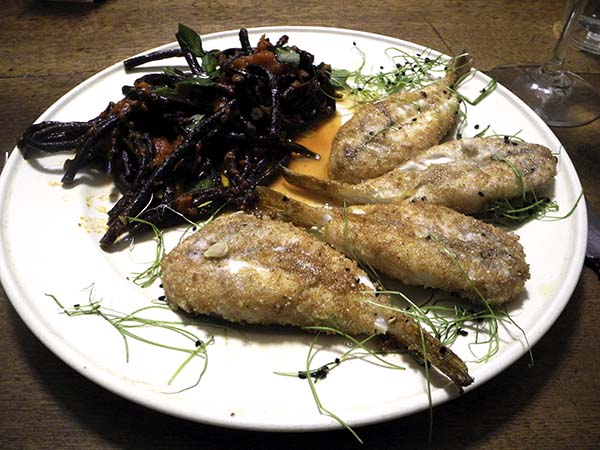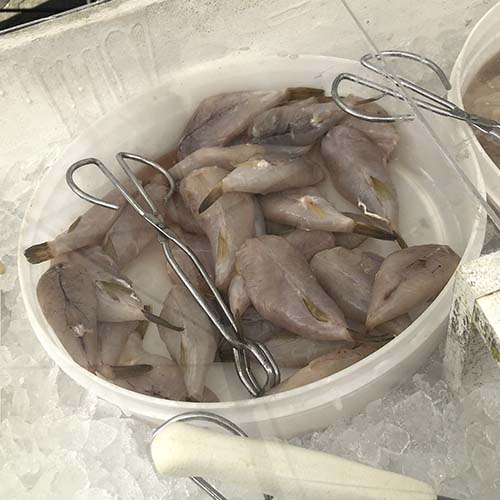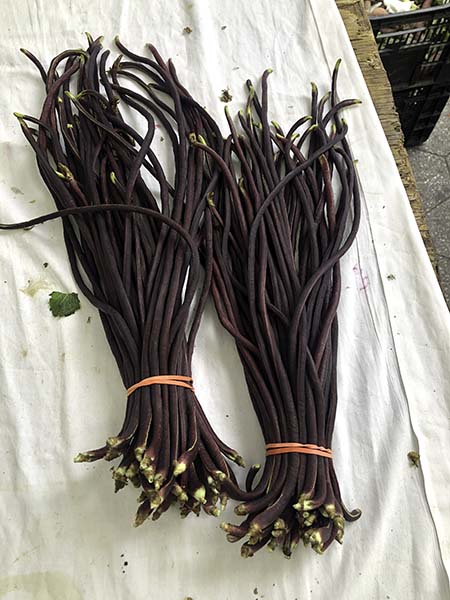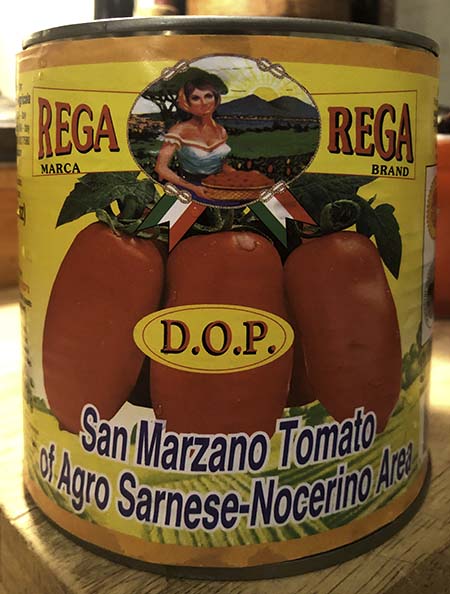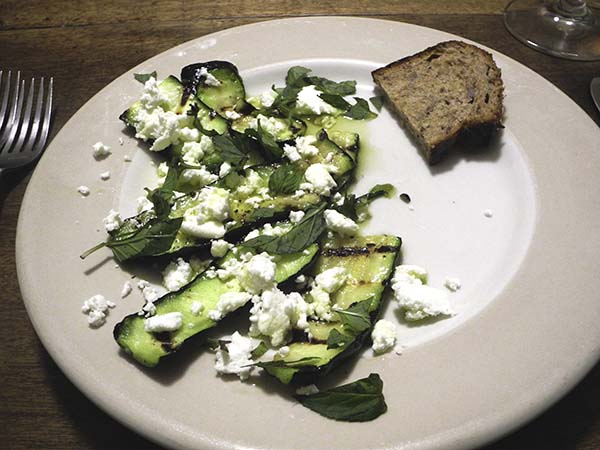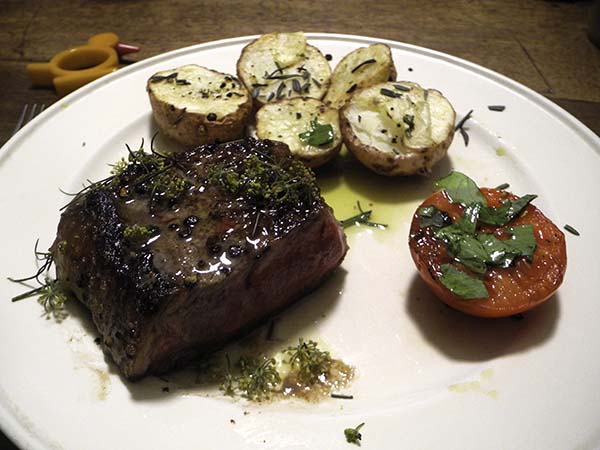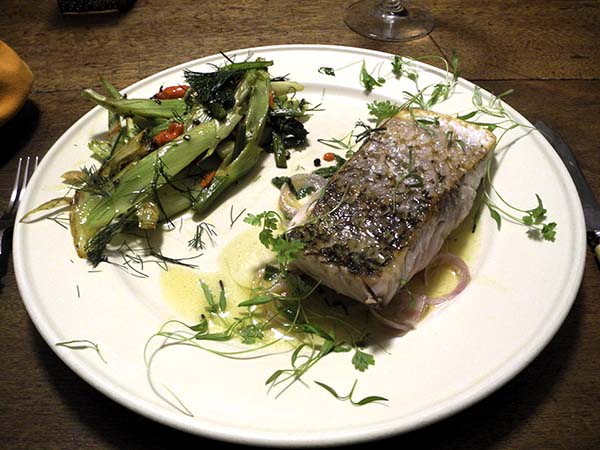
I always think of how privileged we are to be able to enjoy this magnificent local game fish, and I try hard to treat it well.
But the vegetables available to us, although rarely wild, are appreciated at least as much.
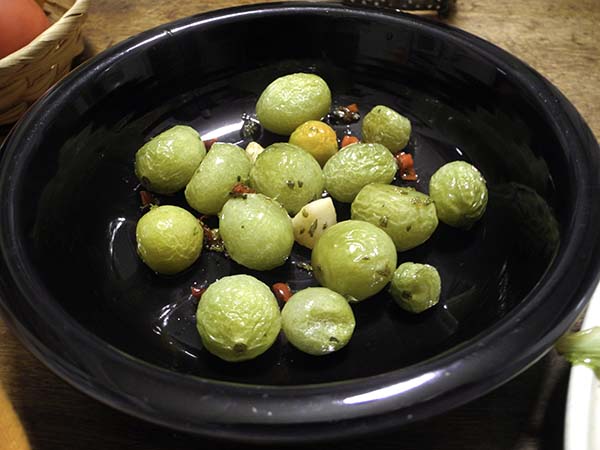
- two 8-ounce striped bass fillets from Pura Vida Seafood Company, removed from the refrigerator, salted lightly, allowed to rest at room temperature for 20 minutes or so, then the skin side scraped with a butter knife to remove excess moisture and both sides patted dry afterward with a paper towel while an 11-inch well-seasoned French steel pan was heated above a high flame and a tablespoon, or a little more, of Australian Mac Nut macademia nut oil from Whole Foods Market poured into the pan and swirled to cover the bottom, allowed to get quite hot, the fish placed skin side down inside the pan, which was immediately jiggled to be sure that the fillets weren’t sticking, the fillets salted on that side, the heat turned down to medium-high, their surfaces pressed down lightly with a spatula for 30 to 60 seconds (to ensure that the skin browns evenly), cooked without moving for 3 or 4 minutes then flipped, at which moment the pan was jiggled again, to see that the filets moved easily, and that skin side cooked for another minute, to be sure maybe a bit more, the heat turned off shortly before the time was up, the pieces removed to a warm platter, a tablespoon and a half of butter added to the pan and swirled so that it melted swiftly, followed by a generous helping of chopped shallot from Alex’s Tomato Farm in the Saturday Chelsea’s Down to Earth Farmers Market on West 23rd Street, the mix stirred with a wooden spatula and the sauce immediately poured onto a portion of the surface of each of the 2 plates, the bass fillets arranged on top, garnished with micro chervil from Two guys from Woodbridge
- eight ounces of washed and dried green (unripe) cherry tomatoes from Alewife Farm, first punctured with a skewer, slow-roasted inside a small antique rolled-edge tin square oven pan with a heaping teaspoon of dried Italian oregano from Buon Italia, one chopped red shishito pepper, also from Alewife Farm, half a tablespoon or more of olive oil, and 3 bruised cloves of garlic [I forgot my usual garlic routine here, and so they were halved rather than ‘bruised’] from Foragers Market, roasted late afternoon that day, at 325º for about 35 minutes, then set aside to be served at room temperature hours later with the rest of the entrée [Note: I had actually forgotten about them until after I had photographed the plate and we’d already begun eating, so I arranged the tomatoes in bowls to the side of the plates, and photographed one of those separately]
- two small fennel bulbs from Quarton Farm, separated from their fronds, and the fronds separated from their stems, sliced, first in half, then into narrow wedges, sautéed in olive oil, along with some of the more tender stems, with a little chopped ‘Chesnok Red’ garlic from Alewife Farm, sea salt and freshly-ground black pepper, and 3 or 4 small of the red shishito peppers from Alewife Farm, chopped, until everything has softened and begun to char, served garnished with some of the chopped fennel fronds
- the wine was a New Zealand (Hawkes Bay) white, Rod Easthope Reserve Hawkes Bay Sauvignon Blanc 2018, from Naked Wines
- the music was Richard Strauss’ ‘Ariadne auf Naxos’, with Jessye Norman in the title role, Kurt Masur conducting the Leipzig Gewandhaus Orchestra
